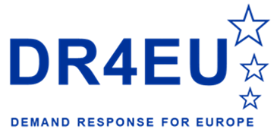In terms of physics, having DR participate in wholesale electricity markets is necessary to ensure it matches the needs of flexibility entailed by a wide use of renewables: you need GWs of DR to balance the intermittency of GWs of renewables.
In terms of competition, allowing DR to bid in the market alongside generation ensures the cheapest solution is selected by the market – hence expensive generation is avoided by reducing consumption instead, and thus expensive prices are avoided: DR ensures suppliers reduce their sourcing costs.
These are direct benefits for all suppliers: buying cheaper in the market, they save money.
On the other hand, having DR sold in the wholesale market means it is bought by electricity suppliers: DR comes at a cost.
This study quantifies the benefits and the costs of DR: it shows that benefits are 190% greater than costs: DR entails a huge net benefit to suppliers, to be ultimately transferred to all consumers.
Note: DR will benefit all suppliers, hence all consumers – not just those participating in DR.
CompassLexecon used their standard pan-European system model to quantify the impact of having 30 GW of DR in 2030.
30 GW is several times more than available today, yet far from the potential of 160 GW in 2030 according to the report published by the European Commission with the Clean energy package.
Several strictly conservative assumptions are used, thus leading to underestimate the benefits of DR – and yet the model finds benefits almost twice greater than costs.
CompassLexecon presented their study during the EER & DR4EU event on 6 May 2021. To download the presentation, click left.
<<<<
The full study with detailed assumptions and methodology can be downloaded by clicking the button to your right.
>>>>
Update 18th May 2022
Huge benefits of DR
during 2022-23
Given the new situation, with rapidly increasing wholesale prices of electricity linked to scarcity of generation resources, particularly from gas, benefits of using DR at scale in the short term, i.e. during the upcoming winter, have dramatically increased.
Compass Lexecon provided in May 2022 an updated version of their study for this period (2022-23) showing huge impact obtained with only around 5% of peak load participating to DR in the wholesale market.
The executive summary highlights the key results of this quantification of having DR participate in the wholesale electricity markets: it is available for download by clicking the button to your right.
>>>>
The need to protect consumers from wholesale market prices at such level arose as a major concern throughout Europe and should definitely lead to a wider use of demand response, first of all by opening wholesale market to DR in all Member States.
CompassLexecon presented their study during the workshop on 6 Dec 2022. To find more on this event, click left.
<<<<
The full study on 2022-2023 can be downloaded by clicking the button to your right.
>>>>
